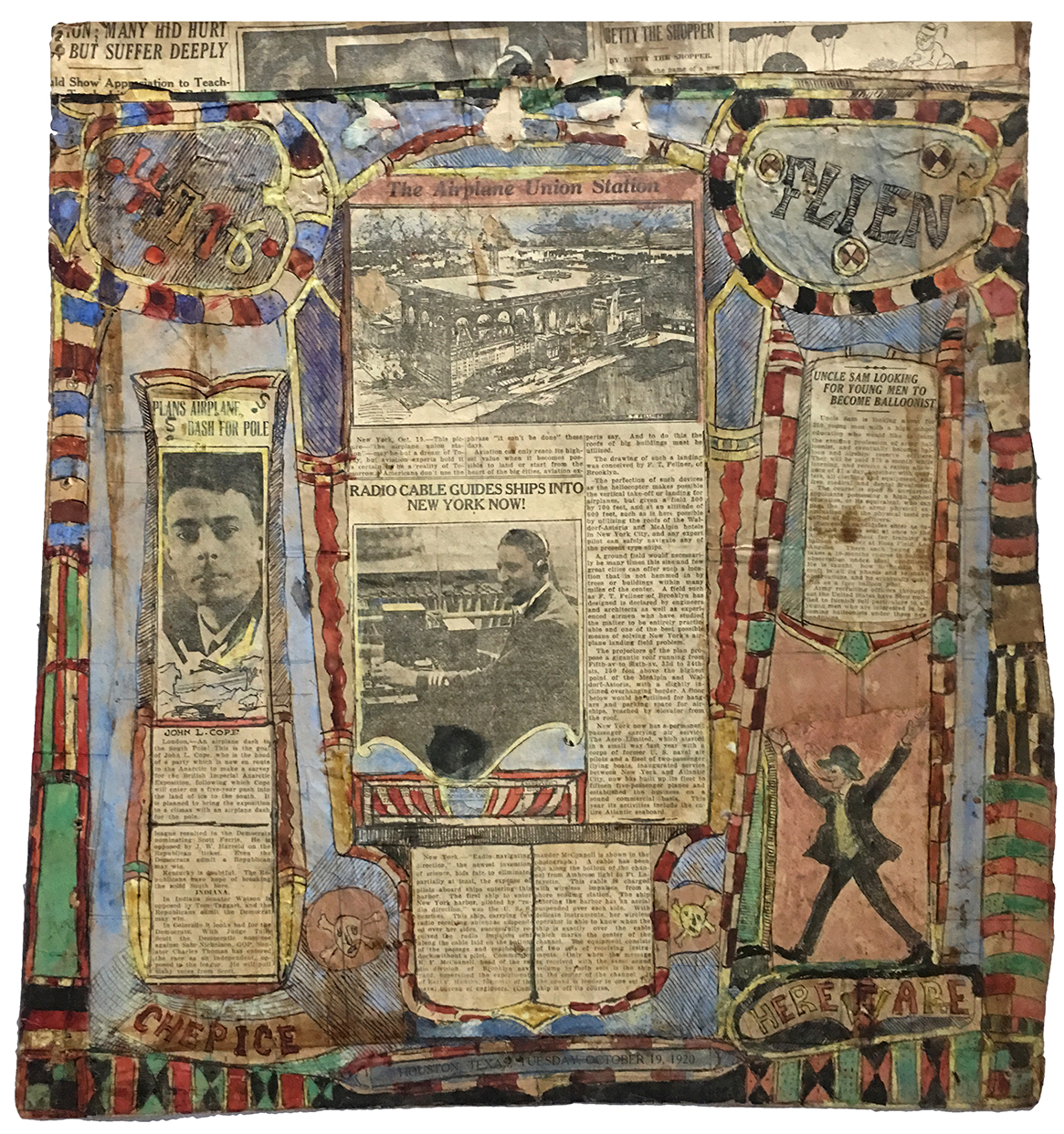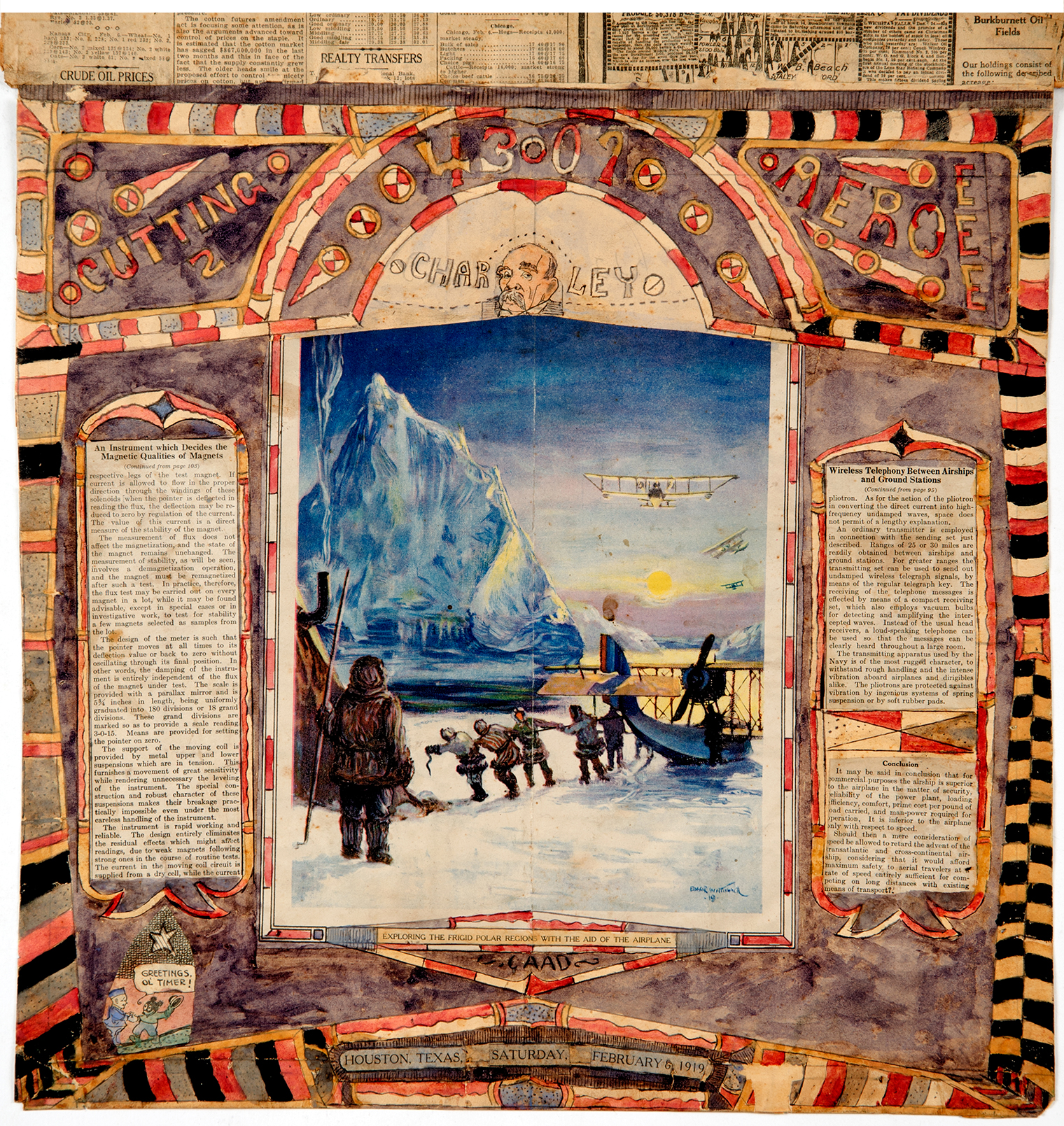Brooklyn Antiquarian Book Fair Preview: Charles A.A. Dellschau and the Mythology of Flight
/Flying has become such an everyday occurrence that it’s easy to forget how magical and magnificent the concept once was. Throughout human history inventors have devised strange and wondrous contraptions to make people fly—with varying degrees of success. Figuring within that history is the obsessively detailed and mysterious works of Charles A.A. Dellschau (1830-1923), some of which will be on display at the Brooklyn Antiquarian Book Fair from September 7-8th.
In the exhibition “Charles A.A. Dellschau and the Mythology of Flight,” curated by Brian Chidester, courtesy the Stephen Romano Gallery, twenty of the artist’s framed images from the last four years of his life will be on display. These compositions—a mixture of illustration, expressionist painting style, and collage—depict Dellschau's incredible flying machines and personal experiences.
There’s some mystery surrounding the artist and his work however. He apparently came to the U.S. from Prussia as a teenager in the 1840s, then followed the siren call of the Gold Rush out to California a decade later. Upon establishing himself in the frontier town of Sonora, Dellschau became secretary of the Sonora Aero Club—a fraternal order of German engineers whose focus was developing early flying machines. Years passed and he eventually became a butcher in Houston, Texas, yet little is known of how he got to there from California. In 1893, he began a kind of memoir/manuscript, documenting the mysterious flying contraptions he saw in Sonora and recording memories of the Aero Club. Dellschau died in obscurity in 1923—his family members being the only ones who knew of his work.
Since his death, no one has been able to confirm the actual existence of the Sonora Aero Club, leaving scholars to scratch their heads as to whether the work is the only record of this fraternal order or if Dellschau invented the whole thing?
But the story doesn’t stop there. The artist’s manuscripts—12 in total—were almost lost to time; until a house fire in the late 1960s in Houston, that is, which resulted in their discovery. (They have since been acquired by a variety of collectors and collections.)
While most have focused, heretofore, on the mystery of Sonora Aero Club, Chidester is instead drawn to another aspect of Dellschau’s work. Namely, the obsession he had from roughly 1919 to 1923, “with daily news reports about the newest flying machines and their commercial or political uses.” When viewed as a whole, continues Chidester, “they creat[e] a kind of visual mythology, or a compendium of all that was Brooklyn Antiquarian Book Fairhappening at the time in flight technology.”
Through his use of Masonic and other secret society symbols, as well Greco-Roman design motifs, Dellschau was “more or less telling the epic tale of flight,” Chidester insists. He was looking at “the psychological and sacred qualities surrounding invention of flight.”
When asked why this exhibition is important today Chidester says he sees the sincerity of Dellschau's work as an antidote to the distrust and irony of modern times. Plus, the curator adds, “Dellschau dedicated his whole artistic program to the psychological effects of technology, which is something everyone can relate to these days.”
“A lot of times,” Chidester concludes, “things get lost because they were made outside the conventional way of thinking. It is invaluable to learn why they were discarded; and what they can tell us about the world as it was and is.”
With wings on your feet, fly to the exhibition and the lecture (Sunday at 3pm) about the work of Charles A. A. Dellschau at the Brooklyn Antiquarian Book Fair. Also, Chidester is working on a documentary on Dellschau—see the trailer here.
Elisa Shoenberger is a researcher and writer. She has published articles and essays at the Boston Globe, the Rumpus, Deadspin, Syfy, Artsy, Hyperallergic, Wine Enthusiast, and other outlets. She is a regular contributor to Book Riot and Inside Philanthropy.






